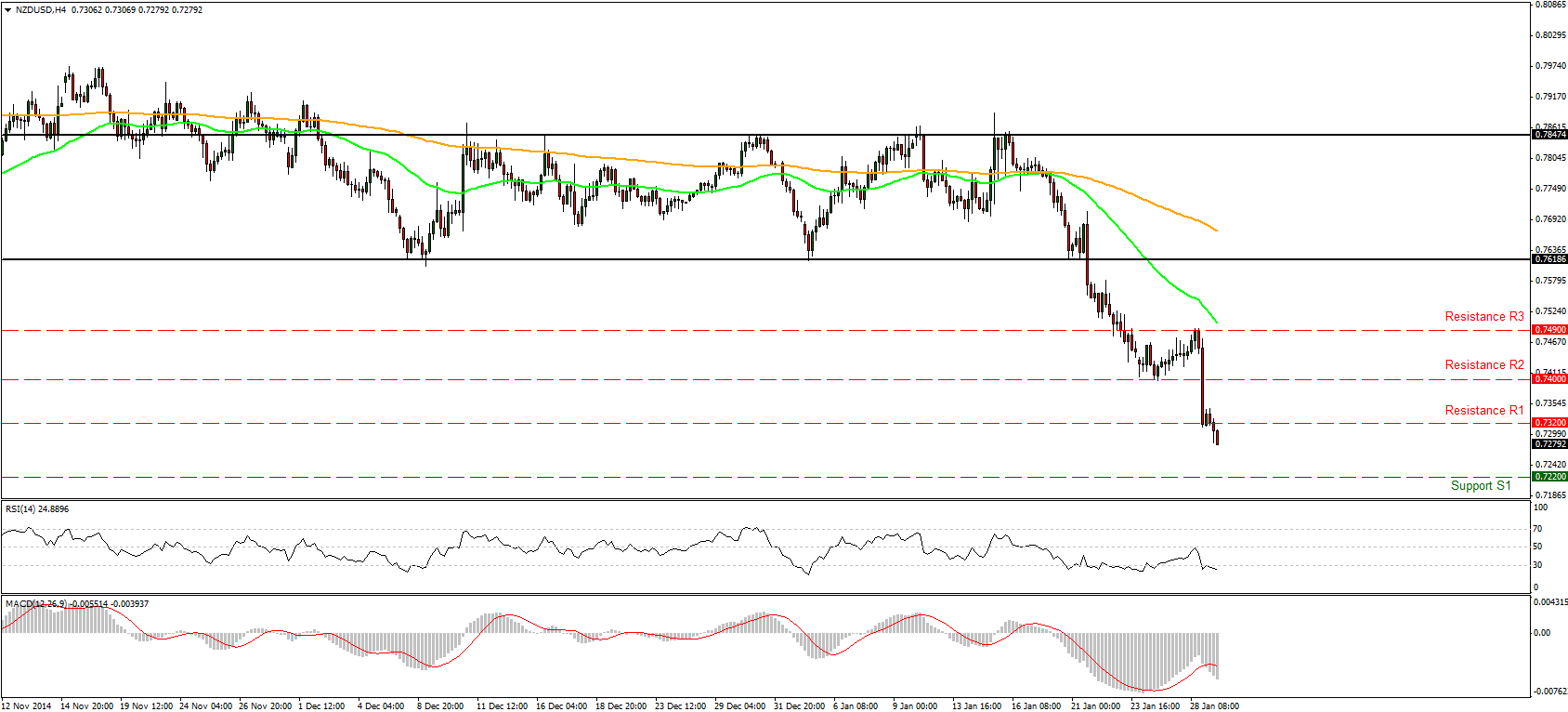NZD/USD
The dollar traded mixed against its G10 counterparts during the European morning Thursday. It was higher against AUD, CHF, NZD, in that order, while it was lower against SEK, NOK and EUR. The greenback was stable vs GBP, CAD and JPY.
The euro was resilient ahead of the preliminary national German CPI for January, despite all of the regional CPIs entering deflationary territory on a yoy basis. These figures indicate that the national inflation rate, due out late this afternoon, is also likely to fall to deflation. The data raise the likelihood that Friday’s Eurozone CPI is likely to fall further into deflationary territory as forecast. This may put further selling pressure on EUR. In the meantime, the German unemployment rate declined to 6.5% from 6.6% in December, and the unemployment change declined 9k, a better performance than -25k previously, showing that the labor market in Germany remains strong.
Eurozone’s M3 money supply grew 3.6% yoy in December, at a faster pace than +3.1% yoy previously and better than expected. Loans to private sectors fell on a yoy basis in December, but at a slower pace than in November. The ECB’s massive QE program is probably the last thing left to support lending and boost growth and prices in the Eurozone.
NZD/USD collapsed after the Reserve Bank of New Zealand shifted from a tightening bias to a neutral bias and even held out the possibility that the next move in rates would be a cut. The pair found an initial support near the 0.7320 zone, but broke that line and declined even more during the European morning Thursday. Given the negative sentiment towards kiwi, I would expect the pair to fall further at least until our 0.7220 (S1) support line. Our momentum studies support the notion. The RSI fell sharply below its 30 line and is pointing down, while the MACD, already negative, crossed below its trigger line. On the daily chart, the recent break below the black channel the pair has been trading in since December switched the bias to the downside, confirming the trend mode of this pair.
Support: 0.7220 (S1), 0.7180 (S2), 0.7120 (S3).
Resistance: 0.7320 (R1), 0.7400 (R2), 0.7490 (R3).
Recommended Content
Editors’ Picks
EUR/USD trades with negative bias, holds above 1.0700 as traders await US PCE Price Index

EUR/USD edges lower during the Asian session on Friday and moves away from a two-week high, around the 1.0740 area touched the previous day. Spot prices trade around the 1.0725-1.0720 region and remain at the mercy of the US Dollar price dynamics ahead of the crucial US data.
USD/JPY jumps above 156.00 on BoJ's steady policy

USD/JPY has come under intense buying pressure, surging past 156.00 after the Bank of Japan kept the key rate unchanged but tweaked its policy statement. The BoJ maintained its fiscal year 2024 and 2025 core inflation forecasts, disappointing the Japanese Yen buyers.
Gold price flatlines as traders look to US PCE Price Index for some meaningful impetus

Gold price lacks any firm intraday direction and is influenced by a combination of diverging forces. The weaker US GDP print and a rise in US inflation benefit the metal amid subdued USD demand. Hawkish Fed expectations cap the upside as traders await the release of the US PCE Price Index.
Sei Price Prediction: SEI is in the zone of interest after a 10% leap

Sei price has been in recovery mode for almost ten days now, following a fall of almost 65% beginning in mid-March. While the SEI bulls continue to show strength, the uptrend could prove premature as massive bearish sentiment hovers above the altcoin’s price.
US economy: Slower growth with stronger inflation

The US Dollar strengthened, and stocks fell after statistical data from the US. The focus was on the preliminary estimate of GDP for the first quarter. Annualised quarterly growth came in at just 1.6%, down from the 2.5% and 3.4% previously forecast.
